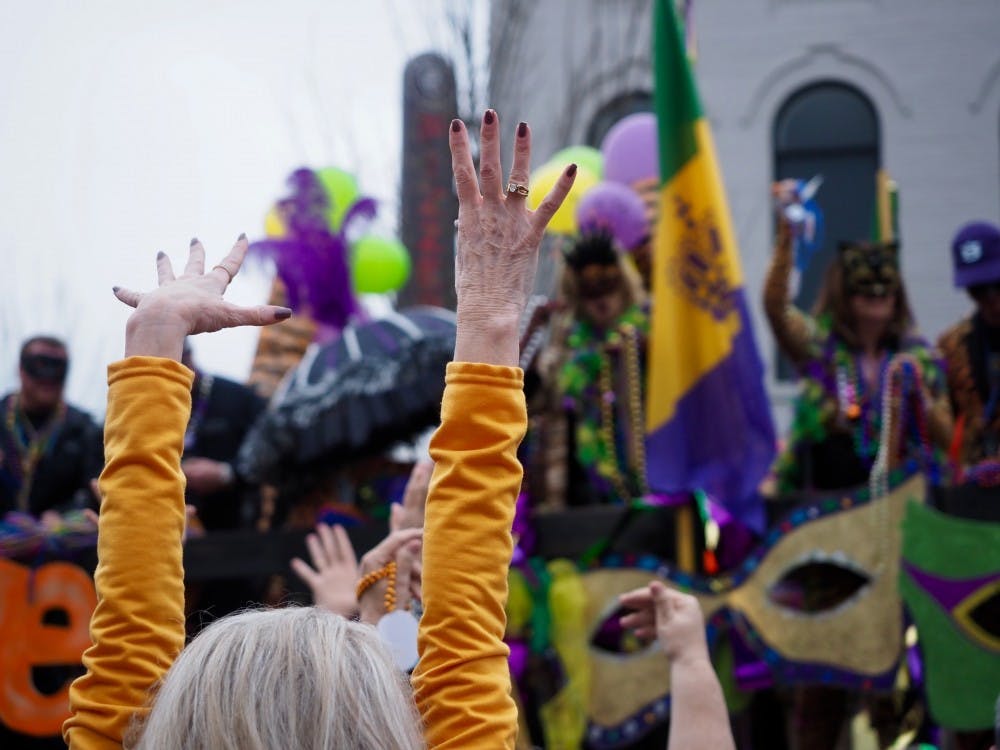Mardi Gras is the feast before the fast, said William Skoneki, pastor at Saint Michael the Archangel Catholic Church.It is the celebration before the season of Lent, which is itself a preparation for Easter, Skoneki said.
Historically, Lent would fall around springtime when there would be a good supply of game. Because people could not preserve the meat, people would try to eat up their stockpiled food before they had to fast, which is why Mardi Gras was usually celebrated as a feast, according to Skoneki.
The celebration took other forms over the years, however, including the now-characteristic parades.
Mobile, Alabama, is the home for the original Mardi Gras in the United States, Shoneki said.
Their Mardi Gras parades started around 1830 with a group of men who went around town with cowbells and rakes. They called themselves the Cowbellion De Rakin Society.
During the Civil War, the parades were less abundant, but Joe Cain helped revive the celebration when he dressed as an Indian, went to the Union soldiers and told them it was for Mardi Gras, Skoneki said.
From there, during late the 1860s, a group called the Order of Myths was formed in order to partake in the celebration. More groups formed over time, along with more celebrations, parades and balls, Skoneki said.
“We go home for the parades every year,” said Macabe Faulkner, sophomore in civil engineering.
After Mardi Gras comes Lent, which is a 40-day period, Skoneki said. Although fasting tends to get more emphasis, Shoneki said that's not all there is to Lent.
“I often say give up, take up and look up,” he said. “These aren’t official Catholic terms. But give up would be fasting, giving up something for Lent. Taking up would be doing good things, technically called almsgiving, and then the third would be looking up, of course, would be prayer.”
Lent is similar to a spiritual spring training, Skoneki said.
“That whole idea [is] about improving yourself or doing something that makes you closer to God and a better servant of the Lord and others. That’s what lent is supposed to be about,” he said.
When deciding what to do for Lent, Skoneki said to be wary of focusing just on the "doing" and not also on the purpose. At one of his parishes, a little boy told him he was giving up Coke, but the boy was sitting there drinking a can of Pepsi, Skoneki said.
It’s good to think of what might be beneficial to both oneself and others when deciding on what to do for Lent, according to Skoneki.
“It’s not designed to make other people miserable. It’s not designed to make you miserable, but it’s designed to help you grow closer to God and other people,” he said.
As a student during Lent, it’s good to keep in mind how one’s Lenten practices may work into an academic schedule, and to try to make realistic choices or expectations while keeping things challenging, Skoneki said.
Do you like this story? The Plainsman doesn't accept money from tuition or student fees, and we don't charge a subscription fee. But you can donate to support The Plainsman.

Abigail Murphy, senior in journalism with minors in history and women and gender studies, is the operations managing editor at The Auburn Plainsman.





